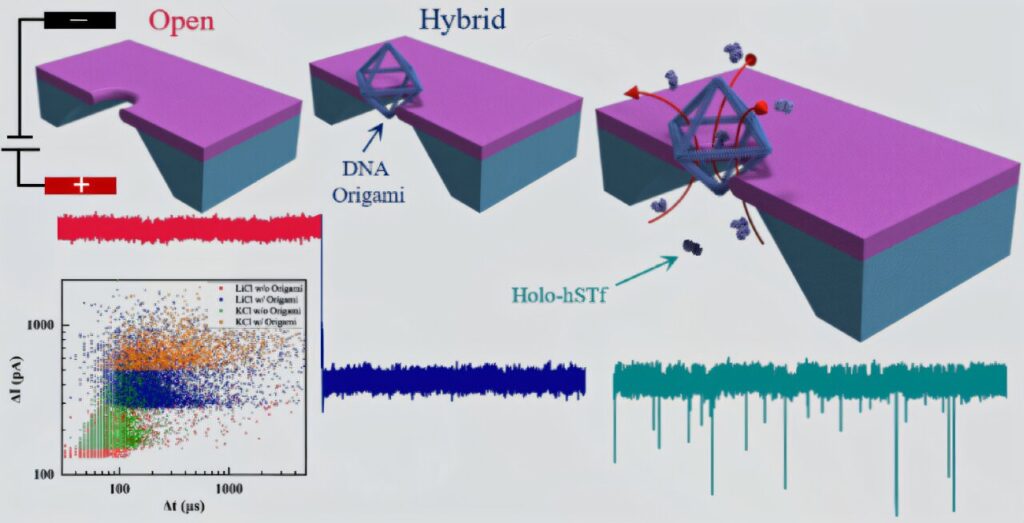SMU Lyle mechanical engineering graduate student Kamruzzaman Joty has introduced a new technique in nanotechnology for detecting and analyzing biomolecules, potentially paving the way for new methods of early disease detection.
The study, recently featured on the cover of Analytical Chemistry, integrates octahedral DNA origami structures with solid-state nanopores to significantly improve the detection of proteins, especially those that are present in low concentrations.
“This work could pave the way for developing advanced biosensing technologies, with potential applications in biomedical research and diagnostic tools—especially for diseases marked by low-abundance protein biomarkers,” Joty said.
Nanopores are tiny holes that can detect individual molecules as they pass through, making them ideal tools for analyzing biomolecules like DNA and proteins. However, detecting proteins at very low concentrations—such as those found in early stages of diseases—has been a challenge.
Joty and his research team determined that combining the precision of DNA origami with the robustness of solid-state nanopores could create a “hybrid nanopore” system, enabling more precise analysis. DNA origami is a method where DNA strands are folded into specific shapes, like an octahedron, to enhance the nanopore’s ability to capture and sense proteins.
In the study, the researchers used holo human serum transferrin as a model protein to show how the hybrid nanopore could outperform traditional nanopores in sensitivity and detection accuracy.

Many diseases, including cancer and neurodegenerative disorders, are characterized by proteins that are present in very small amounts, making them difficult to detect early. The hybrid nanopore’s ability to sense these low-abundance proteins could lead to earlier diagnoses and better treatment outcomes.
“In the future, we will focus on refining the design of DNA origami structures and nanopore configurations to further enhance sensitivity and broaden the range of detectable biomolecule,” Joty said. “This exciting work could lead to innovations in drug discovery, disease diagnostics, and fundamental biological research.”


